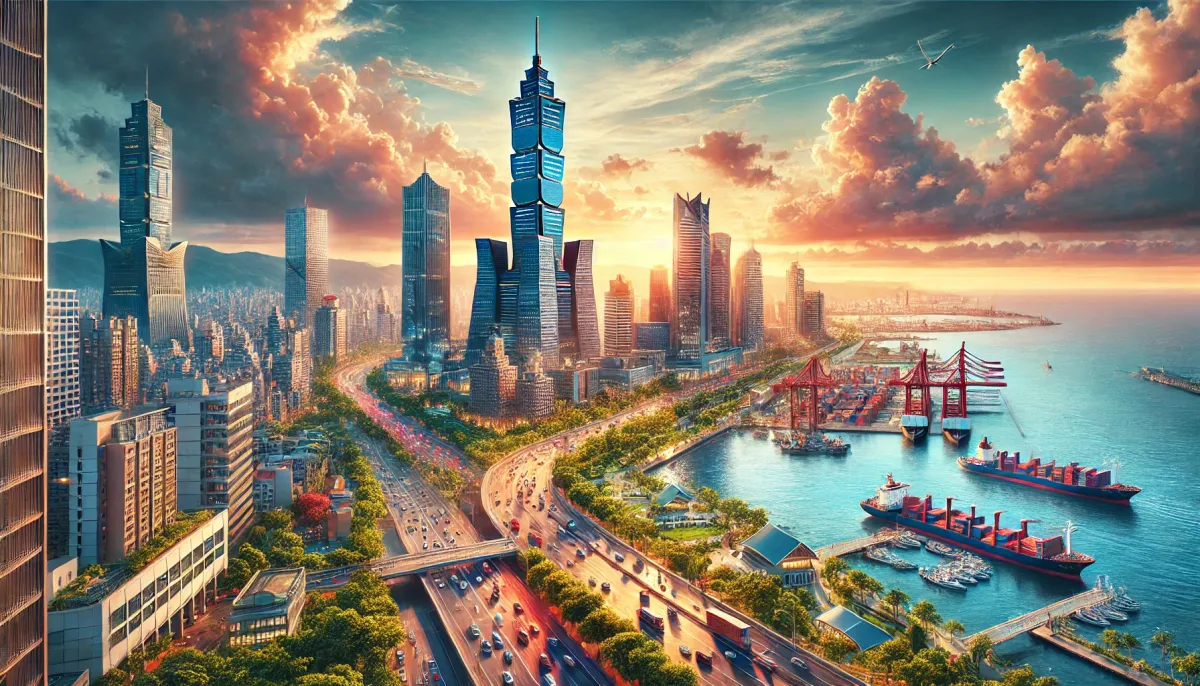Hey everyone, Mark here! As a seasoned backpacker with a passion for exploring Asian cities, I recently had the incredible opportunity to visit Kaohsiung, Taiwan. This vibrant port city, the third largest in Taiwan, absolutely blew me away. From its fascinating history to its modern marvels, Kaohsiung offers a unique blend of culture, art, and natural beauty that's sure to captivate any traveler, especially those from the West looking for a truly unforgettable Asian adventure.
A City Transformed: From Humble Beginnings to Modern Metropolis
Kaohsiung's story is one of remarkable transformation. Just 400 years ago, during the Ming Dynasty, this area was a small fishing village frequented by pirates, derisively nicknamed "Beaten Dog" (打狗) by the Han Chinese. Today, Kaohsiung has shed its humble past and emerged as a stunning port city, brimming with art, culture, and a distinctly modern vibe. While Taipei 101 might steal the spotlight in terms of sheer height, Kaohsiung's 85 Sky Tower arguably represents a more fashionable and contemporary spirit. The city boasts the largest harbor in Taiwan, earning it the moniker "Harbor Capital," and offers a mesmerizing blend of old and new.
Exploring Kaohsiung's Iconic Landmarks
| Landmark | Description |
|---|---|
| 85 Sky Tower | A 378-meter tall skyscraper, completed in 1997, and a symbol of Kaohsiung's modern identity. Its unique design and height make it a must-see. |
| Formosa Boulevard Station | Home to the Dome of Light, the world's largest single piece of glass art. A breathtaking spectacle of light and color that transforms the metro station. |
| Dream Mall | A massive shopping center featuring the Kaohsiung Eye Ferris wheel. A hub for entertainment and shopping, attracting millions of visitors annually. |
Delving into the Past: The Story of "Beaten Dog"
The unusual former name, "Beaten Dog," originates from the indigenous people who planted thorny bamboo forests around their homes to defend against pirates and raiders. The local term for these bamboo forests, when transliterated into Chinese, became "Da Gou" (打狗), which sounds like "Beaten Dog." After the Japanese occupation following the Treaty of Shimonoseki, the name was changed to Kaohsiung (高雄), signifying "high hero," reflecting the city's strategic importance and aspirations.
Beyond the Cityscape: Art, Culture, and Coastal Charms
Kaohsiung's allure extends far beyond its impressive skyline. The Pier-2 Art Center, a revitalized dock area, is a testament to the city's thriving arts scene. Here, I encountered captivating art installations and a vibrant creative atmosphere. The Love River, which flows through the city, adds a touch of romance and offers picturesque views. And don't forget the historic British Consulate, a relic of the past offering glimpses into Kaohsiung's rich history.
Experiencing the Natural Beauty of Sizihwan and Cijin Island
A short ferry ride from Sizihwan, a beautiful bay area known for its sunsets and the National Sun Yat-sen University, lies Cijin Island. This charming island, once a sandbar, boasts stunning beaches, lush forests, and the historic Cihou Fort and Kaohsiung Lighthouse.
My Kaohsiung Takeaway: A City That Surprises and Delights
Kaohsiung truly surprised and delighted me. It's a city that seamlessly blends its historical roots with a vibrant modern identity, offering something for every traveler. Whether you're exploring its bustling markets, admiring its stunning architecture, or soaking up the coastal charm, Kaohsiung is an Asian gem waiting to be discovered. I highly recommend adding this incredible city to your travel list!







